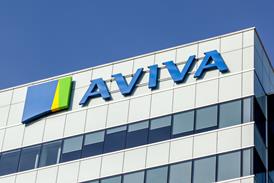A service from DG Publishing
Why trustees will be spending more time on PPF certification, not less
It was no surprise the Pensions Regulator’s latest defined benefit code recognised the potential value to both schemes and sponsors of contingent assets where trustees agree "to accept more risk than can be supported by their available employer covenant”.
Register now for FREE to read this article
If you are already a registered you can SIGN IN now
Register today for free!
It’s quick and easy, and as a registered user you’ll have full access to all Pension Expert articles. You will also be able to recieve editorial emails.
- Full access to all news, analysis and expert comment
- The latest industry insights delivered to your inbox on a Tuesday and Thursday morning
- The Friday Takeaway newsletter reviewing the major events of the week
- Bookmark your favourite articles for easy review
- Hear about and register to attend Pensions Expert and DG Publishing events






